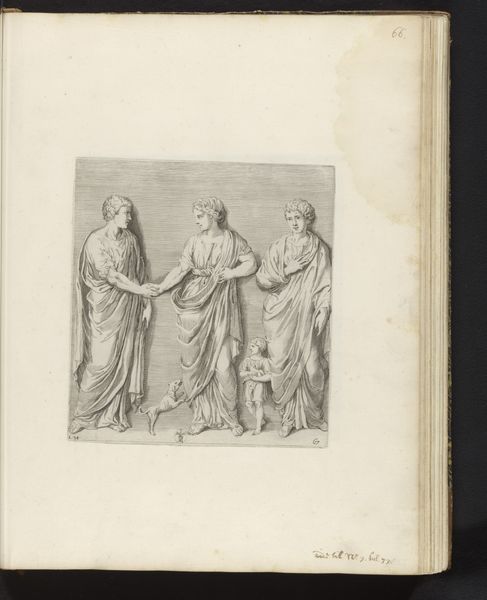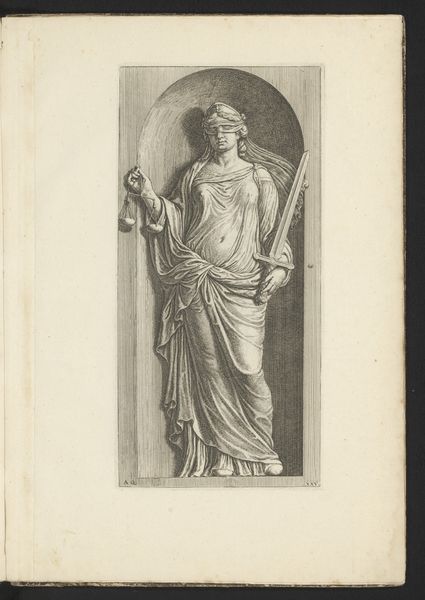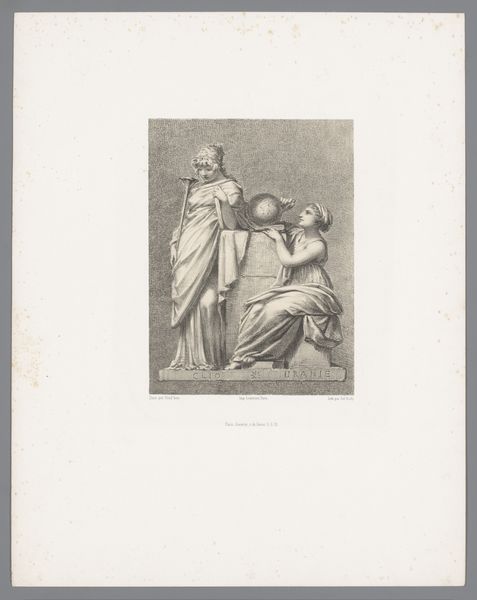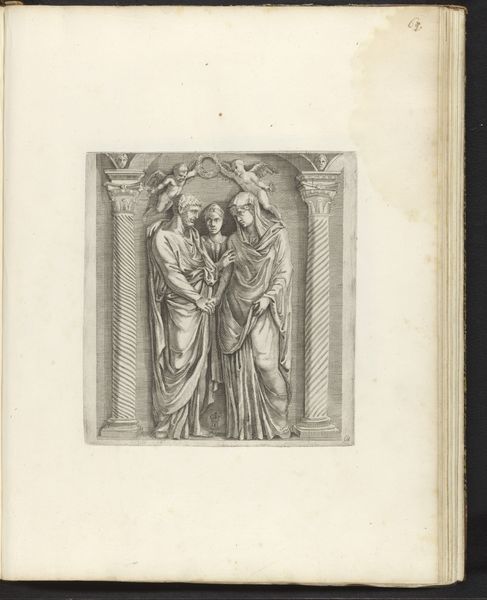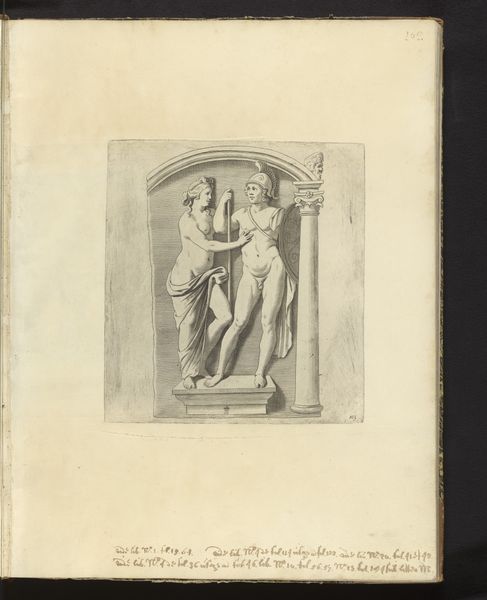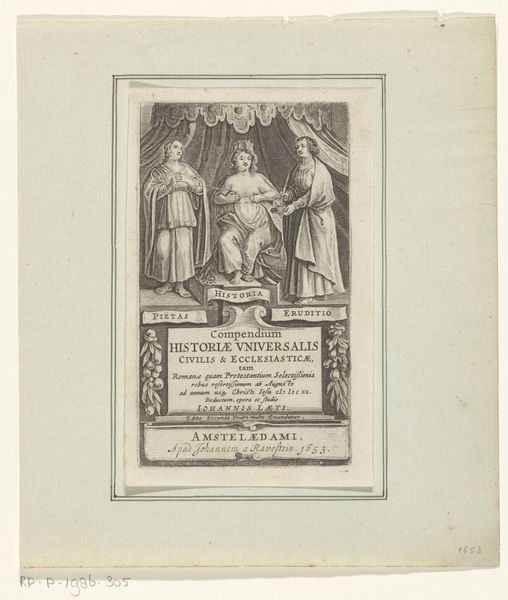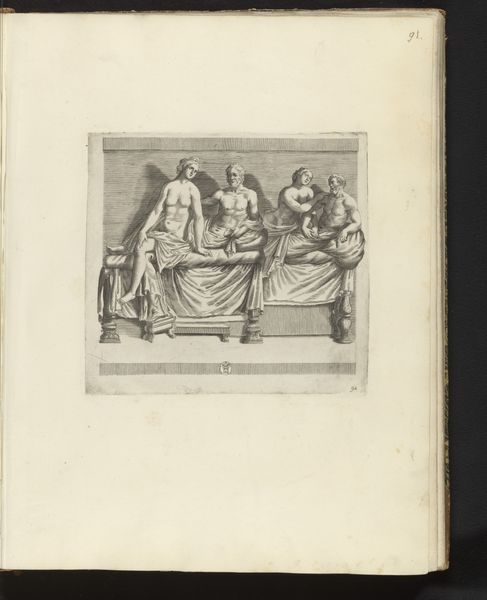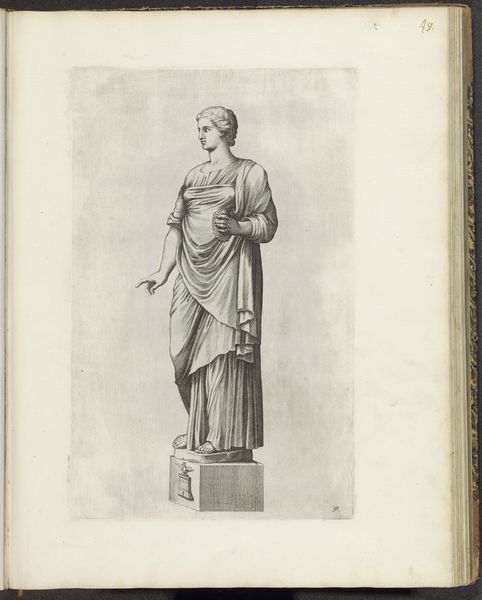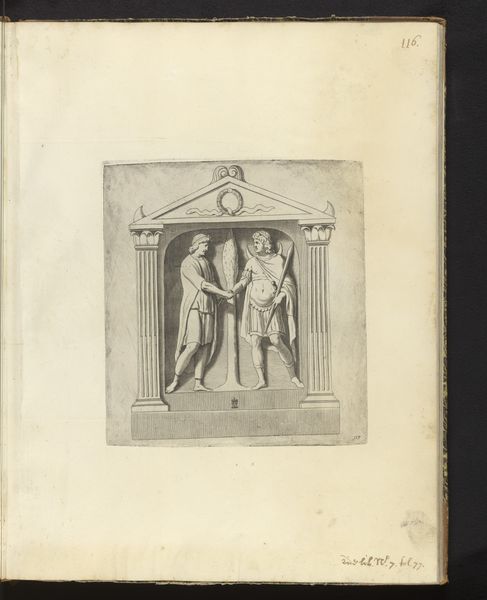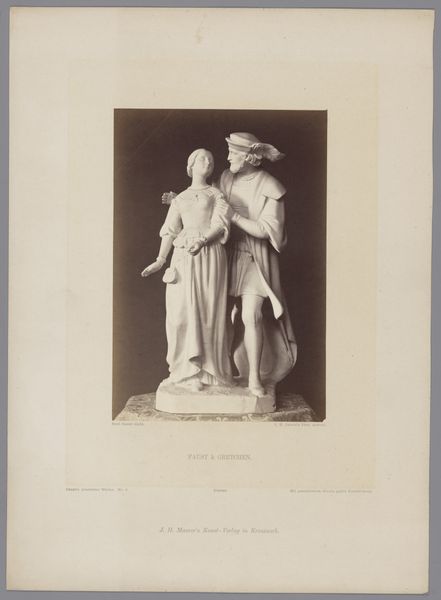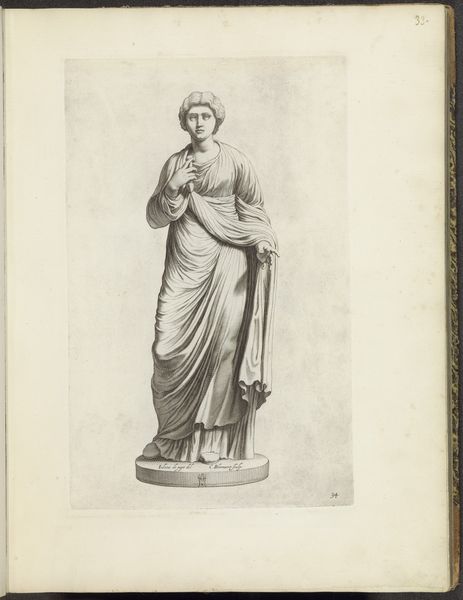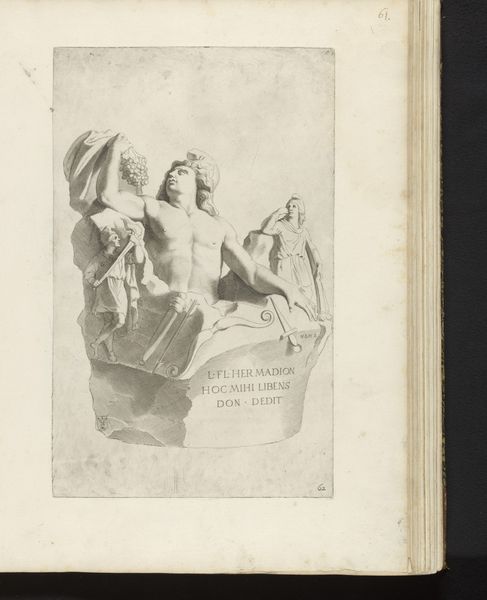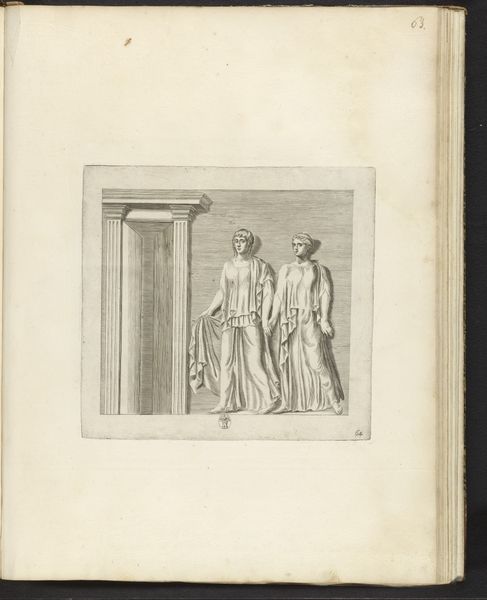
drawing, print, paper, engraving
#
portrait
#
drawing
# print
#
classical-realism
#
figuration
#
paper
#
ancient-mediterranean
#
line
#
history-painting
#
engraving
Dimensions: height 224 mm, width 241 mm
Copyright: Rijks Museum: Open Domain
Curator: Before us, we have an engraving titled "Bas-relief met twee consuls," dating from 1636 to 1647. Editor: It appears very static. The figures are stoic, with limited dynamics; the tonal range focuses on light gray shades on an off-white paper. There is a lot of space between figures. Curator: This piece draws heavily on the art of ancient Rome. Look at their draped garments, their solemn faces, the composition itself evokes a specific moment. Editor: Yes, note how the classical lines provide a structural stability, focusing your eye to specific shapes, like those angular legs showing underneath those beautifully flowing togas, so classically romanticized. How did it function within its time? Curator: Engravings like this one played an important role in disseminating knowledge of classical antiquity during the Renaissance and Baroque periods. Editor: Interesting. Considering this work's cultural value for later societies helps me view how the social construction around certain visual qualities, in this case those from ancient Rome, dictated a vision that could be read and celebrated from different historical and social perspectives. Curator: It’s also remarkable how the artist utilizes line and shadow to create the illusion of depth on a flat surface. Those finely rendered details really bring out a sculptural quality. Editor: You are right. But also consider that engravings were used as educational tools. Curator: Absolutely. They made accessible what could otherwise only be experienced directly by a privileged few, who may be able to afford a trip to Rome, say. Editor: Viewing this print through those various lenses enriches one’s perception and offers perspectives on form, context, intent, and reception of this captivating engraving. Curator: Indeed. Understanding the historical forces shaping art, it seems clear this was more than an accurate reproduction.
Comments
No comments
Be the first to comment and join the conversation on the ultimate creative platform.
